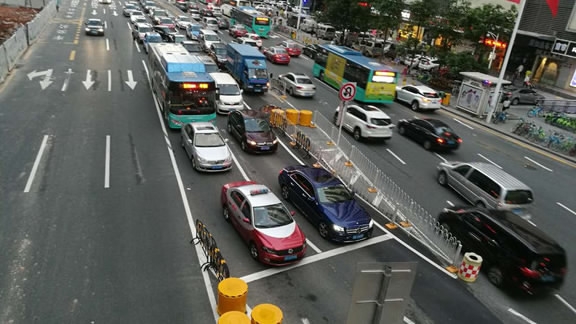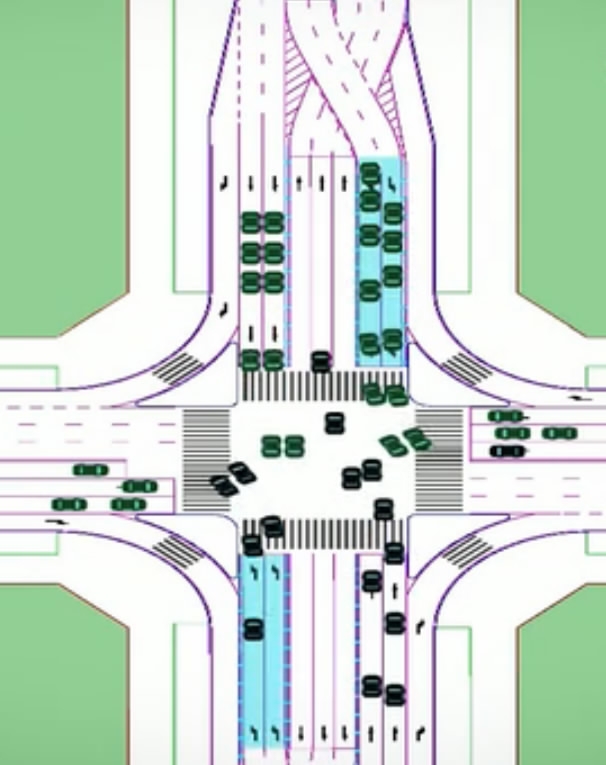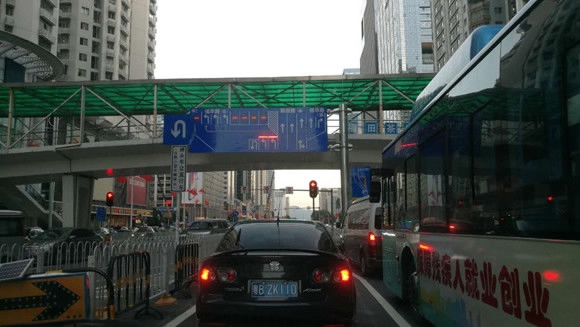
China
18:32, 21-Oct-2017
Continuous flow intersection firstly introduced to S. China
CGTN

Continuous flow intersection (CFI), a new traffic management method, also known as the crossover displaced left-turn (XDL or DLT), was first introduced into China at the intersection of Caitian-Fuhua Road in Shenzhen in south China’s Guangdong Province recently, to reduce congestion.
Different from a traditional intersection, a CFI displaces the left-turn area to the opposite side of the oncoming traffic, which removes the conflict between the through traffic and left-turning vehicles. So the four different direction vehicles can move simultaneously by using one signal at the main intersection.

Applying the CFI can allow the four different direction vehicles to move simultaneously by using only one signal at the main intersection. /Photo via sznews.com
Applying the CFI can allow the four different direction vehicles to move simultaneously by using only one signal at the main intersection. /Photo via sznews.com
To provide smooth and safe traffic flow, the signals at the main intersection and the sub intersection are operated by two-phase fixed-time signal controllers with signals coordination.
Known as one of the most advanced traffic management methods worldwide, Shenzhen is the first city in China to introduce the CFI.
According to a nine-day trial operation and record at the Caitian-Fuhua intersection, the new method is easy for drivers to understand. Most drivers were able to move their vehicles orderly into the left-turn area and pass the crossroad by following the road signs as well as directives.
Police of Shenzhen announced on their official WeChat account on Tuesday that, with the application of CFI, the intersection efficiency was enhanced by 29 percent and the average delay of the intersection had been lowered by 24.1 percent.

Vehicles are driving to the left-turn area orderly by following the road signs as well as directives. /Photo via jiemian.com
Vehicles are driving to the left-turn area orderly by following the road signs as well as directives. /Photo via jiemian.com
Although the CFI has already shown a great potential for improving traffic flow at intersections, the possibility to promote it as a standard setup is slim at the present stage. As Wang Le, the chief of Road Management Section of Traffic Department of Shenzhen Traffic Police said, "The CFI is a big and complicated project which refers to not only the changes of traffic organization method but also dozens of civil constructions. The problem is that many intersections cannot fit the traffic condition and engineering condition at the same time, and also cities haven’t made their decision to widely reconstruct their roads."
At present, Shenzhen has introduced multiple measures to improve traffic efficiency and reduce congestion, such as tidal lanes, HOV lanes and reversible lanes. Unlike these methods, which maximize the use of intersection space, CFI uses time differences to optimize traffic flow and realize the efficiency enhancement.
1945km

SITEMAP
Copyright © 2018 CGTN. Beijing ICP prepared NO.16065310-3
Copyright © 2018 CGTN. Beijing ICP prepared NO.16065310-3